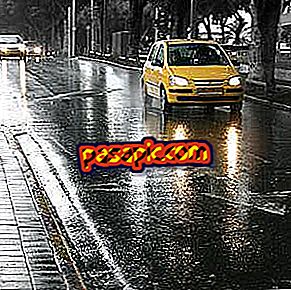How to avoid aquaplaning by car

If we have to drive on a very rainy day or it rains intensely while driving a car, we must be prepared to avoid a dangerous situation such as aquaplaning . Aquaplaning is a physical phenomenon that occurs when the driver loses control of the vehicle, mainly due to two factors. The first is the thickness of the water film on the surface through which we circulate, and the second is the speed that our vehicle carries. A higher speed or greater thickness of water film is easier to appear aquaplaning .
- A car
one
Recognize the situation of aquaplaning is quite simple. The first thing you notice is the feeling of buoyancy of the front axle as if you were driving on ice and it cost very little to turn. The second is the loss of direction.
two
To predict the amount of water on the road, carefully observe the state of the road.
3
Moderates speed in rainy conditions and drives very smoothly, avoiding braking and sudden changes of direction.
4
If it happens to you straight, do not do anything with the steering wheel, you just have to release the accelerator smoothly. When the car slows down you will regain control.
5
If it happens to you in curve, you must do the same thing as in straight with the accelerator pedal and keep the steering wheel turned just enough to trace the curve in which you are. Never turn more until you recover the grip.
6
Never stop in the middle of aquaplaning . Think that when the wheel regains contact with the asphalt, it will be blocked and you can easily lose control of the vehicle.
7
Adapts the driving to the condition of our tires and the road. Most top brand tires, when they are in optimal conditions (new), achieve aquaplaning when they are subjected to speeds of around 75 - 80 km / h.
8
Periodically check the condition of the tires and the pressures recommended by the vehicle manufacturer.
9
When you need to change the tires, try to assemble the ones that the factory car had, since the main vehicle manufacturers develop a specific tire for each model to provide the maximum performance and safety .
10
Avoid the cheapest tires and unknown brands, because in dry they may behave correctly but wet often offer very low performance and aquaplaning appears much earlier. Think that if they are economic it is because in general they save in development.
eleven
If you want to replace your tires with wider ones or with a low profile, keep in mind that the start speed of aquaplaning will be lower since the greater width or rigidity of the tire makes it difficult to evacuate water.
Tips- Increase your attention to the steering wheel and try to have the greatest possible visibility.


